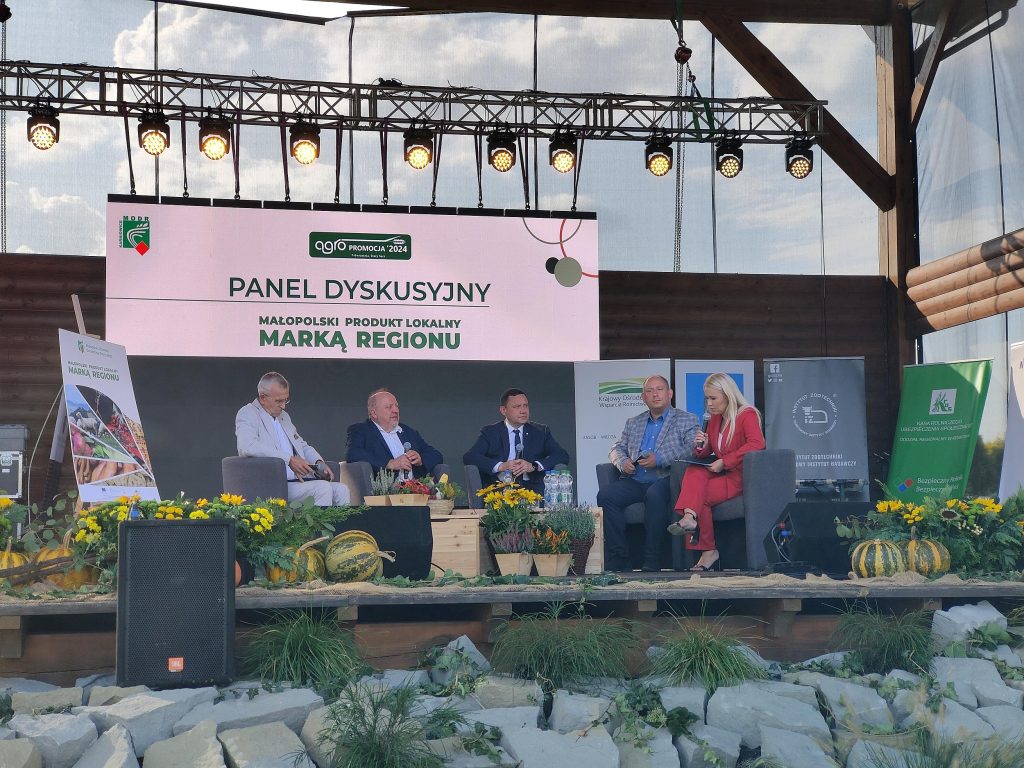On 7–8 September 2024, on the grounds of the John Paul II Diocesan Pilgrimage Centre in Stary Sącz, an agricultural exhibition – Agropromotion 2024 – was held. The event was organized by the Małopolska Agricultural Advisory Centre (MAAC) in Karniowice, the National Research Institute of Animal Production (NRIAP), and the Hugo Kołłątaj University of Agriculture in Kraków.
This year’s 32nd edition of this largest cyclical agricultural exhibition, promoting agriculture, horticulture, agritourism, regional culture and tradition in Małopolska, attracted more than 50,000 visitors, who had the opportunity to get acquainted with the rich offer presented by agricultural institutions, food producers and trade organizations. As part of the event, presentations of new agricultural technologies and demonstrations of field work using modern agricultural equipment were organized.
The National Research Institute of Animal Production focused on promoting and disseminating knowledge about the role of the conservation of farm animal genetic resources and the importance of products, mainly culinary, from these animals. Visitors were particularly interested in a show organized in cooperation with Zakład Mięsny “Jasiołka” Wędliny Tradycyjne Domowe, a demonstration of bull roasting with tasting, and culinary demonstrations, including a 45-minute presentation by well-known chefs: Mikołaj Rey, Piotr Lenart and Błażej Mirota, who discussed the possibilities and uses of beef from native breeds. At the Institute’s stand, visitors were able to taste exceptional products including: cheeses made from the milk of the Polish Red-and-White cow, produced by Andrzej Lassak, and products made from native lamb and pork prepared by Piotr Lenart. An innovative product presented at the stand, made from the milk of Sztumski mares, was soap produced by Katarzyna Marcińczak.
On Saturday afternoon, a panel discussion entitled “Małopolska local product as a regional brand” was held, attended among others by the Director of the National Research Institute of Animal Production –Tomasz Jacek, Ph.D., and agricultural experts: Director of the Małopolska Agricultural Advisory Centre in Karniowice – Bronisław Dutka, Prof. Marcin Rapacz, Ph.D. representing the University of Agriculture in Kraków, farmer, local government member, MP – Jan Duda, and the Governor of Małopolska – Krzysztof Jan Klęczar. The panel provided an opportunity to exchange views on the role and importance of local products in building the region’s brand, and to highlight the value of traditional, regional products.
One of the most important elements of this year’s Agropromotion was the “Exhibition of Native Breed Animals”, aimed at promoting and preserving the genetic diversity of Polish farm animal breeds. The exhibition, which featured, among others, chickens from the Experimental Station IZ PIB Chorzelów Sp. z o.o., as well as ducks and geese presented by the Waterfowl Genetic Resources Station in Dworzyska, attracted the attention of both specialists and the general public, demonstrating the wealth of Poland’s breeding heritage.
As part of the attractions accompanying the animal exhibition, spectators were able to see demonstrations of sheep herding and shepherd dog work, a demonstration of sheep shearing using the machine method, and a sheep shearing competition using the traditional method. Prizes for the winners of the sheep shearing competition were presented by Aldona Kawecka, Ph.D., Prof. of the NRIAP, and Jan Janczy, Director of the Regional Sheep and Goat Breeders’ Association (RSGBA).
The culmination of the exhibition was a ceremony to thank the breeders presenting the animals. Commemorative cups and diplomas were presented by Tomasz Jacek, Ph.D., Director of the NRIAP, Director of MAAC Bronisław Dutka, and Director of RSGBA Jan Janczy.
The National Research Institute of Animal Production, as the co-organizer of the event, had a key contribution to the success of this year’s Agropromotion, which not only contributed to the promotion of Małopolska agriculture, but also emphasized the importance of preserving biodiversity and tradition in animal breeding. The exhibition became a place for meetings, exchanging experiences and promoting native animal breeds and products, which are an integral part of Poland’s cultural and culinary heritage.









